Do you have a question about the Blaupunkt New Jersey MP68 and is the answer not in the manual?
Explains the symbols used in the instructions for warnings and general information.
Specifies the intended use of the device and installation requirements.
Statement of compliance with EU directives.
Guidelines for users installing the device themselves, emphasizing experience.
Crucial warnings about laser, openings, connectors, volume, and hearing protection.
Instructions on how to clean the device and dispose of old units.
Overview of features including tuner, CD/MP3/WMA playback, Bluetooth, and external inputs.
Identification and numbering of the main buttons and interface elements on the front panel.
Detailed description of the function for each numbered button on the device.
Instructions on entering the device's security code after power interruption.
Procedure for changing or deactivating the security code for theft protection.
How to turn the device on and off, including manual and automatic switch-off.
Instructions for adjusting the main volume control and related safety warnings.
Information about the device card as proof of ownership and serial number location.
How to mute and unmute the audio output using the On/Off button or volume control.
Explains how to navigate through System, Audio, and mode-specific menus.
Guide to changing the device's menu language between English and German.
Procedure to reset all settings to factory defaults, including warnings about data loss.
Details on connecting USB storage devices and supported file formats (MP3/WMA).
Steps for connecting USB media and selecting it as an audio source.
Requirements for USB media (file system, ID3 tags, format, naming, bit rate).
Information on supported CD formats and notes on copy-protected or self-burnt CDs.
Features required for MP3/WMA CDs, including format, ID3 tags, and naming conventions.
Step-by-step instructions for inserting and ejecting CDs, with safety warnings.
How to select an inserted CD as the active audio source.
How to set the tuner region (Europe, USA, South America, Thailand) for optimal reception.
Explanation of the elements displayed in the tuner mode screen.
Guide to selecting FM, MW, LW wavebands and their 10 memory locations.
Methods for tuning into stations: automatic seek tuning, manual tuning, and selecting stored stations.
How automatic station seek tuning works and factors affecting it (PTY, Traffic).
How to tune manually and select stored stations from memory or a list.
Methods for manually storing stations using buttons or automatically via Travelstore.
How to automatically search and store the top 10 FM stations in a region.
How to adjust sensitivity for automatic station seeking for FM and MW/LW wavebands.
How to scan and play all receivable stations within a waveband.
How to switch the display of RDS radio text (station information) on and off.
How traffic announcements (TA/EON) work and how to prioritize them.
How to switch traffic report priority on/off and its effect on station search.
How to cancel an ongoing traffic announcement without disabling priority.
How the device automatically switches to better frequencies for stations using RDS AF.
How to allow or prevent switching to regional programs with different content.
How to search for stations broadcasting a specific program type (e.g., rock, news).
How to select the display language for program types (Deutsch, English, Français).
How to select an inserted CD as the audio source and start playback.
Explanation of the elements shown on the display during audio CD playback.
How to access and use CD menu functions like MIX and REPEAT.
Functions accessible directly from the CD display: selecting tracks, fast search, scanning, time display.
Options available in the CD menu: Random playback, Repeating tracks, Display CD text, Scrolling text.
How to select CD-R/CD-RW or USB media for MP3/WMA playback.
Explanation of the elements displayed during MP3/WMA playback.
How to switch between MP3 display, Browse mode, and Playlist mode using DIS-ESC.
Functions accessible directly from the MP3 display: selecting folders/tracks, fast search, scanning.
Options available in the MP3 menu: Random playback, Repeating tracks, Displaying track info, Scrolling text.
How to select functions and options within the MP3 menu using buttons.
How to browse and select tracks/folders as stored on the MP3 data carrier.
Steps to navigate and select tracks or folders within the Browse mode.
How to play playlists created with MP3 managers, and supported formats.
How to view and select playlists, then select tracks within a playlist.
How to select and start C'n'C mode for compatible Blaupunkt devices.
Explanation of the elements shown on the display when operating in C'n'C mode.
How to switch between C'n'C display, C'n'C display with time, and Browse mode.
Functions directly accessible from the C'n'C display: selecting folders/tracks, fast search, scanning.
Options available in the C'n'C menu: Random playback, Repeating tracks, Displaying track info, Scrolling text.
How to select functions and options within the C'n'C menu using buttons.
Information on compatible Blaupunkt CD changers and connection notes.
How to select the CD changer as the audio source, requiring at least one CD.
How to select a specific CD from the changer magazine for playback.
Functions directly accessible from the CD changer display: selecting tracks, fast search, scanning, time display.
Options available in the CD changer menu: Random playback, Repeating tracks.
How to register up to 5 Bluetooth®-ready devices (MP3 players, phones) for streaming.
How the device automatically attempts to connect to registered Bluetooth® players on startup.
How to select the Bluetooth® streaming source and start playback.
Explanation of the elements displayed during Bluetooth® audio streaming.
How to select the next or previous track during Bluetooth® streaming playback.
Information about the front AUX-IN socket, including safety warnings and recommended cables.
Details on rear AUX inputs for C'n'C devices and CD changers.
How to switch between C'n'C and non-C'n'C modes for the rear AUX input.
Steps for connecting other external audio sources (MP3 players, etc.) to the rear AUX input.
How to activate the rear AUX input in the menu and select it as a source.
How to enter custom names for external audio sources connected via AUX inputs.
How to play an external source simultaneously with another audio source (e.g., navigation announcements).
How to assign individual device numbers to multiple C'n'C-ready Blaupunkt interfaces.
Requirements for Bluetooth® phone calls: compatible phone, microphone, and proximity.
Steps for initial registration (acquaintance) between phone and car system.
How to open the Bluetooth® menu to access all phone-related settings and functions.
Procedure for registering a cell phone, including PIN entry and connection confirmation.
How to set a master telephone for automatic connection priority.
How to manage registered devices: unregister, connect, or delete devices from the list.
Procedure to remove all previously registered Bluetooth® devices.
How to answer or reject an incoming call, and the system's response.
Methods for making a phone call: entering number, speed dial, phone book, or history.
How to end an active phone call using the button or by switching off the device.
How to switch an active call between the car system speakers and the cell phone.
How to store new entries and call numbers from the device's internal phone book.
How to edit names and phone numbers of existing entries in the device's phone book.
How to delete individual entries or all entries from the device's phone book.
Information on uploading cell phone contacts and their storage limits.
Steps to download the phone book from the connected cell phone to the device.
How to select and call entries from the downloaded cell phone book.
How to call numbers from the dialed, received, or missed calls history.
How to use speed dial for direct access to contacts, history, and voice dialing.
How to activate and use voice dialing, including activation requirements and error messages.
How to change the Bluetooth® PIN for device registration.
How to change the name displayed by other Bluetooth® devices.
How to access the Audio menu using the AUDIO button or the MENU button.
How to adjust bass, treble, balance (left/right), and fader (front/rear) levels.
How to select predefined sound profiles (Pop, Rock, Classic) for different music genres.
Introduction to the 3-band equalizer and guidance on choosing settings for sound quality.
Detailed steps to adjust equalizer levels, frequencies, and quality factors for each band.
How to customize the welcome message displayed when the device turns on.
Settings related to the clock: display on/off and 12/24 hour format.
Step-by-step guide to setting the current time and minutes.
How to adjust power-on volume, volume for TA/TEL, and mute level.
How to set the volume at power-on to a fixed level or the last used level.
Adjusting volume levels for traffic announcements, phone calls, and mute function.
How to activate or deactivate the audible confirmation tones for menu operations.
How to enable automatic volume adjustment based on vehicle speed.
Overview of display settings: brightness, viewing angle, and color.
How to adjust the display contrast for optimal viewing angle based on installation.
How to adjust brightness levels separately for day and night modes.
How to mix custom display illumination colors using RGB settings.
How to select a display color by scanning through available colors.
How to activate or deactivate a constantly changing display color.
How to adjust the scan time for radio station scanning.
How to adjust subwoofer output level and cut-off frequency via the Enhanced menu.
How to turn the device's demonstration mode, showing animations, on or off.
How to view version numbers for different device components.
Instructions for updating the device software via a USB data carrier.
Details on device weight, voltage supply, and current consumption.
Specifications for amplifier output power and preamplifier output channels.
Details on input sensitivity for AUX and Navi, and tuner wavebands in different regions.
Explanation of how RDS service sends frequencies for better FM reception.
Definition of Bluetooth® wireless communication for short distances.
Definition of a broadcasting network offering multiple stations.
Explanation of EON for switching to traffic information stations.
Definition of ID3 tags containing MP3 file information like artist and album.
Definition of mass storage devices like USB sticks or hard disks.
Definition of MP3 and WMA audio data formats for compression.
Explanation of playlists for MP3 or WMA files and their creation.
Definition of PTY for searching stations by program content.
Explanation of RDS for station names and additional broadcast information.
Definition of REG for managing regional program content and frequencies.
Definition of the root folder as the main folder on a data carrier.
Explanation of quality factor determining equalizer filter quality.
Definition of shape CDs and why they may cause damage or reading errors.
Definition of subwoofer and subout preamplifier output.
Explanation of TA for switching traffic announcements at a preset volume.
Definition of automatic station searching and storing.
Definition of the tuner as the radio receiving unit.
Definition of USB as an interface for connecting storage devices.
Explanation of X-BASS for boosting bass at low volume levels.
Table listing default values for various settings, some region-specific.
Essential safety precautions to observe during installation work and connections.
Notes on vehicle plug connectors, adapter cables, and potential model variations.
| Display Type | LCD |
|---|---|
| Max Power Output | 4 x 50W |
| Radio Tuner | Yes |
| Radio Data System (RDS) | Yes |
| Bluetooth | Yes |
| Bluetooth Profiles | A2DP, AVRCP |
| USB Port | Yes |
| AUX Input | Yes |
| SD Card Slot | Yes |
| Equalizer | Yes |
| CD Player | Yes |
| Playback Formats | MP3, WMA |
| Remote Control | Yes |
| Steering Wheel Control | Yes |
| Compatibility | Android |
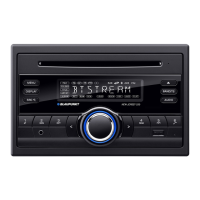
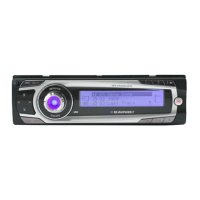
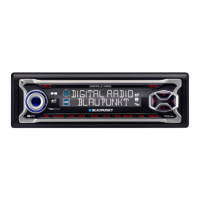




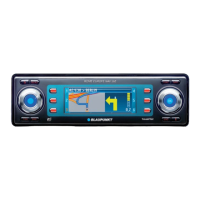
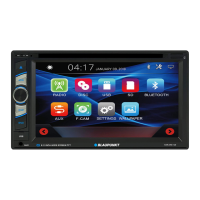

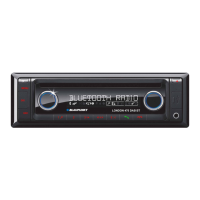
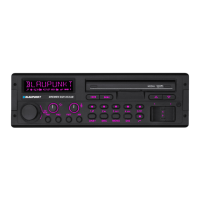
